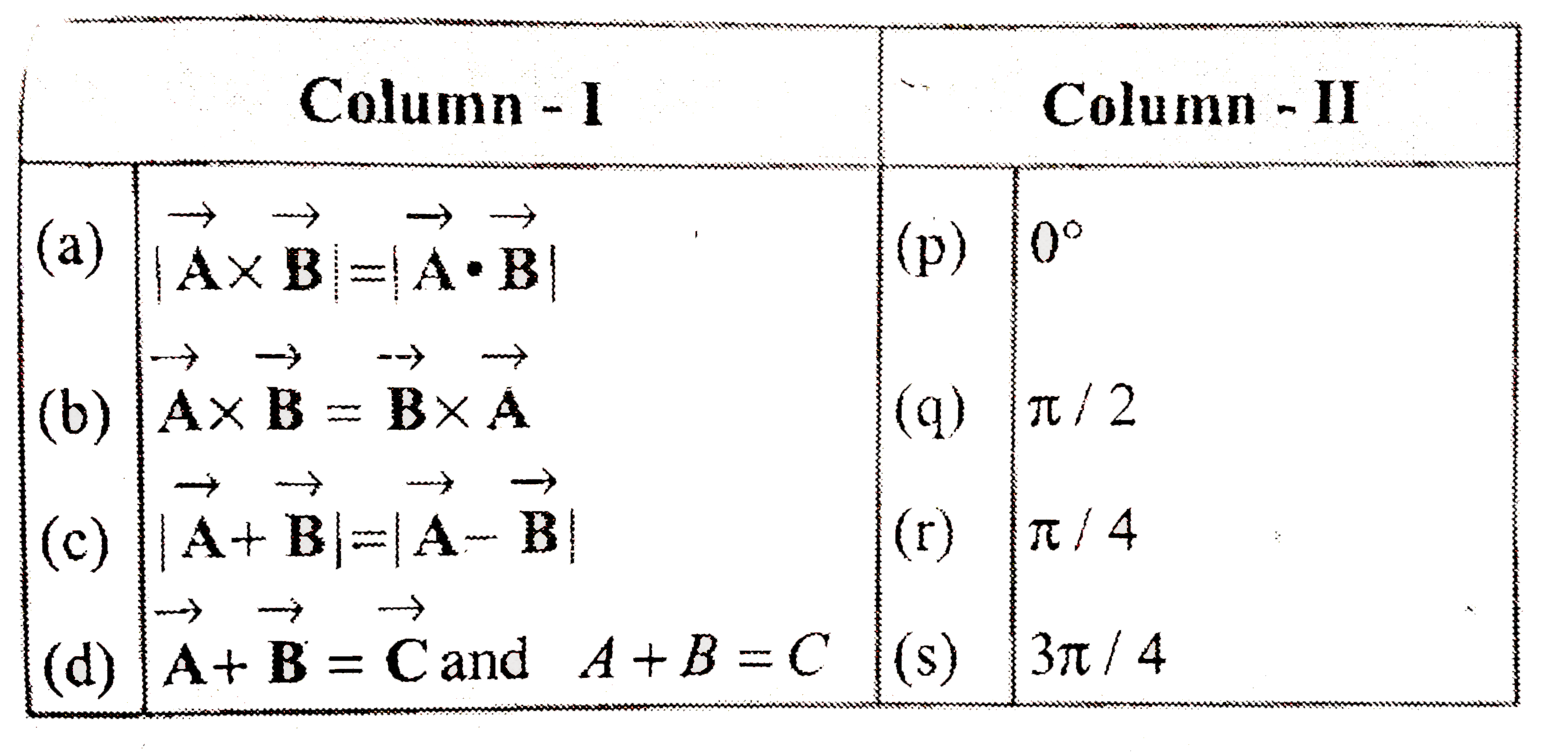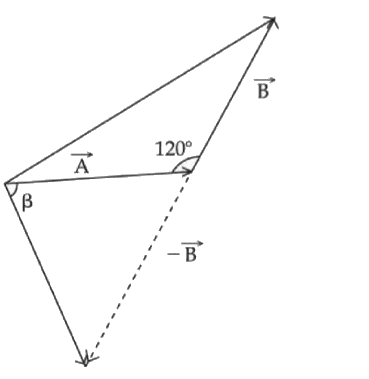If B is the angle between →A and →A−→B. Then tanB is
2B√32A−B
2B√3A−B
B√32A+B
2B√3A+B
To solve the problem, we need to find the value of tanB, where B is the angle between the vector →A and the vector →A−→B.
1. Understand the Vectors:
We have two vectors: →A and →B. The vector →A−→B can be interpreted as the vector →A translated by the negative of vector →B.
2. Determine the Angle:
The angle B is the angle between →A and →A−→B. We can visualize this by placing the tail of →B at the head of →A and observing the angle formed.
3. Using the Law of Cosines:
To find the angle B, we can use the cosine rule in the triangle formed by →A, →B, and →A−→B. Let’s denote the magnitude of →A as a and the magnitude of →B as b. The angle between →A and →B is given as 120∘.
Using the law of cosines:
|→A−→B|2=|→A|2+|→B|2−2|→A||→B|cos(120∘)
Since cos(120∘)=−12, we have:
|→A−→B|2=a2+b2+ab
4. Finding tanB:
The tangent of angle B can be expressed using the sine and cosine of the angle. We can use the formula:
tanB=|→B|sin(θ)|→A|+|→B|cos(θ)
where θ is the angle between →A and →B (which is 120∘).
Substituting sin(120∘)=√32 and cos(120∘)=−12:
tanB=b⋅√32a+b⋅−12=b⋅√32a−b2
5. Final Expression:
Thus, the final expression for tanB becomes:
tanB=b√3a−b2
We have two vectors: →A and →B. The vector →A−→B can be interpreted as the vector →A translated by the negative of vector →B.
The angle B is the angle between →A and →A−→B. We can visualize this by placing the tail of →B at the head of →A and observing the angle formed.
To find the angle B, we can use the cosine rule in the triangle formed by →A, →B, and →A−→B. Let’s denote the magnitude of →A as a and the magnitude of →B as b. The angle between →A and →B is given as 120∘.
|→A−→B|2=|→A|2+|→B|2−2|→A||→B|cos(120∘)
Since cos(120∘)=−12, we have:
|→A−→B|2=a2+b2+ab
The tangent of angle B can be expressed using the sine and cosine of the angle. We can use the formula:
tanB=|→B|sin(θ)|→A|+|→B|cos(θ)
where θ is the angle between →A and →B (which is 120∘).
tanB=b⋅√32a+b⋅−12=b⋅√32a−b2
Thus, the final expression for tanB becomes:
tanB=b√3a−b2
Topper's Solved these Questions
- JEE MAIN 2021BOOK - JEE MAINS PREVIOUS YEARCHAPTER - JEE MAIN 2021EXERCISE - SECTION-A
80 Videos
- JEE MAIN 2021BOOK - JEE MAINS PREVIOUS YEARCHAPTER - JEE MAIN 2021EXERCISE - SECTION-B
40 Videos
- JEE MAINBOOK - JEE MAINS PREVIOUS YEARCHAPTER - JEE MAINEXERCISE - All Questions
473 Videos
- JEE MAIN 2022BOOK - JEE MAINS PREVIOUS YEARCHAPTER - JEE MAIN 2022EXERCISE - Question
492 Videos
Similar Questions
Knowledge Check
Given that A=B. What is the angle between (→A+→B) and (→A−→B) ?
A30∘B60∘C90∘D180∘Given that A=B. What is the angle between (→A+→B)and(→A−→B) ?
A30∘B60∘C90∘D180∘The angle between (→A+→B)&(→A×→B)
A0Bπ/4Cπ/2Dπ
what is the angle between →aand→b,if→a.→b=3and∣∣→a×→b∣∣=3√3.
View SolutionColumn-I gives operation of vectors →Aand→B and column- II gives the angle (θ) between →A and →B (→A and →B are not zero vectors ).

View SolutionAssertion: If θ be the angle between →A and →B then tanθ=→A×→B→A.→B
Reason: →A×→B is perpendicular to →A.→B
View SolutionIf θ is the angle between unit vectors →A and →B, then (1−→A.→B)1+→A.→B⎞⎟ ⎟⎠ is equal to
View SolutionIf ∣∣→A×→B∣∣=∣∣→A⋅→B∣∣, then the angle between →Aand→B will be :
View Solution

